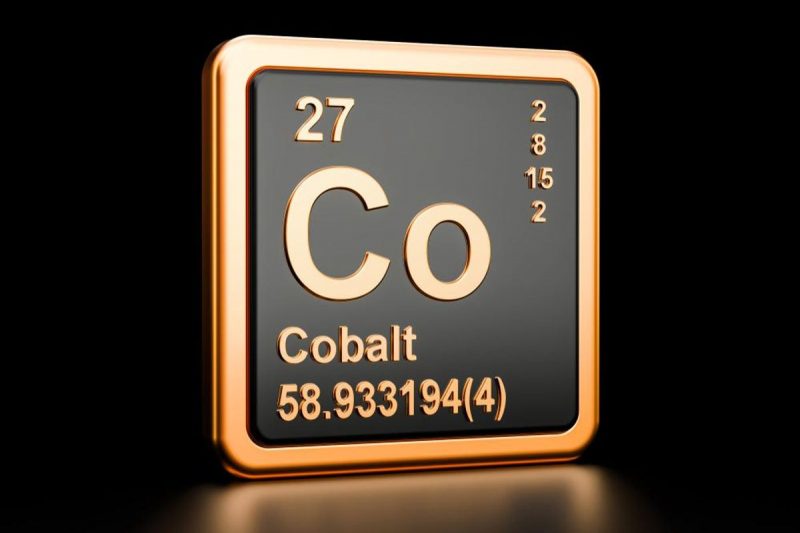Cobalt has gained considerable market attention over the past several years. Even though prices for the battery metal have been volatile, more and more investors are showing interest in cobalt.
This focus on cobalt has erupted due to the essential role the commodity plays in the lithium-ion batteries that power electric vehicles (EVs) — including the popular nickel-manganese-cobalt (NMC) battery.
Despite the existence of cobalt-free lithium-iron-phosphate (LFP) batteries and the potential for disruptive new battery technologies, demand for cobalt is expected to rise, and market watchers are keen to find out where it may be mined in the future. That’s why it’s important to review cobalt reserves, which is how much economically mineable cobalt a country holds. By keeping an eye on these numbers, it’s possible to guess which countries may become — or continue to be — cobalt powerhouses.
For instance, even though the Democratic Republic of Congo (DRC), the world’s top cobalt producer, holds the largest reserves of cobalt, Australia has a sizeable amount as well, and the latter country doesn’t have the same widespread issues that the DRC has. Knowing this kind of information can help investors get ahead of the herd.
“Those who control these critical raw materials (lithium, cobalt, nickel and graphite), and those who possess the manufacturing and processing know-how, will hold the balance of industrial power in the 21st century auto and energy storage industries,” Benchmark Mineral Intelligence Managing Director Simon Moores has previously said.
Jack Bedder of Project Blue expects cobalt demand to increase by 8.9 percent per year between 2021 and 2027, driven largely by the lithium-ion battery market. At the same time, supply constraints are expected to support higher prices for cobalt.
Against that backdrop, EV manufacturers might struggle to secure supply of cobalt in the coming years, in addition to lithium, nickel and graphite. In fact, automakers are concerned that there is not enough of these raw materials in the pipeline to meet the needs of EV manufacturing, and many are scrambling to secure supply.
With that in mind, here’s an overview of cobalt reserves by country based on the US Geological Survey’s most recent data.
1. Democratic Republic of Congo
Cobalt reserves: 4,000,000 MT
As mentioned, the DRC holds the world’s largest reserves of cobalt. It’s also the world’s top cobalt producer, providing over half of global supply, with an estimated 18 to 30 percent extracted by artisanal miners.
Unfortunately, the DRC is also home to political instability, making it a challenging place to mine. What’s more, mining in the country has been linked to child labor and human rights abuses. In addition to that, in 2018, former President Joseph Kabila implemented a new mining code that increased royalties and taxes on the mineral.
Even so, the DRC is likely to remain key to cobalt production for the foreseeable future. As Caspar Rawles of Benchmark Mineral Intelligence has said, ‘In terms of the vast volume increases in cobalt that are going to be needed for electrification, you’re really dependent on the DRC.’
2. Australia
Cobalt reserves: 1,500,000 MT
Australia puts out much less cobalt than the DRC, but its reserves of the metal are still high. It produced 5,900 MT of cobalt in 2022, making it the fourth largest cobalt producer, and its reserves stand at 1,500,000 MT.
With concerns about DRC cobalt running high, some electric car makers are calling for increased EV battery production outside the African country, and Australia is one of the countries both automakers and battery manufacturers are paying attention to. Currently, most cobalt production in Australia is produced as a by-product of copper and nickel mining, two base metals that are also essential raw materials in electric cars.
3. Indonesia
Cobalt reserves: 600,000 MT
Indonesia’s cobalt reserves are the third largest globally. Its production came in at 10,000 MT in 2022, making the country the second largest cobalt producer, and Benchmark Mineral Intelligence has said its output could increase over 30 fold this decade.
Indonesia also represents a large growth market for refined cobalt. China-based Zhejiang Huayou Cobalt has partnered with EV battery maker EVE Energy (SZSE:300014) and others to build a US$2.08 billion nickel and cobalt smelting project in Indonesia.
More cobalt reserves by country
The DRC, Australia and Indonesia have the highest cobalt reserves, but many other countries also hold significant cobalt reserves. Here’s a quick look at where other nations stand:
Cuba — 500,000 MTPhilippines — 260,000 MTRussia — 250,000 MTCanada — 220,000 MTChina — 140,000 MTMadagascar — 100,000 MTUnited States — 69,000 MTPapua New Guinea — 47,000 MTTurkey — 36,000 MTMorocco — 13,000 MT
According to the US Geological Survey, the total world reserves figure for cobalt sits at 8,300,000 MT.
Securities Disclosure: I, Melissa Pistilli, hold no direct investment interest in any company mentioned in this article.

